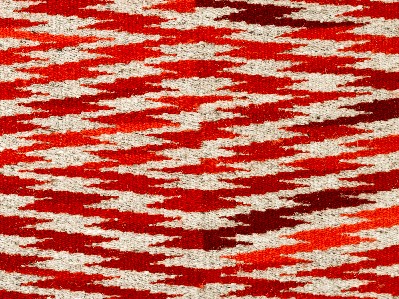Landscape Paintings with Natural Dyes
By Taniya Vaidya
Background
I am an India-based painter and have focused for a decade on creating contemporary paintings using ancient natural dyeing techniques (TRJ, Volume 13, Issue 2). My quest has been to develop a different expression while following the complex methods of natural dyeing. The nature-culture relationship is central to my works. I was invited by the India International Center (IIC) New Delhi to exhibit my paintings in natural dyes on Khadi (handloom) fabric from July 13 to 19, 2016. The exhibition was visited and appreciated by artists, architects, professionals, art lovers and others. It was also widely covered in local media.
Process: Training with traditional craftspeople and innovation
Working with natural dye craftspeople across India taught me that each natural dyeing site has variations in the method of application of colors-blocks as well as in the fixing agents used, in response to the natural resources available in the local landscape. Nonetheless, basic colors like madder, myrabulam and indigo are common to many of the sites.
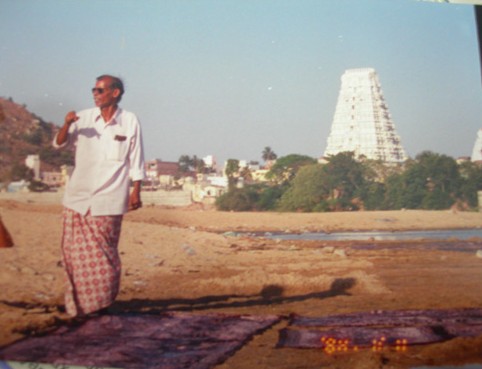
I decided to focus on the natural fermentation process for indigo in my studio. I got a research fellowship at the Rhode Island School of Design Museum department of Costumes and Textiles to study the ancient natural dye samples and here I focused on the indigo techniques used through the centuries. I researched the 15th century Ajrakh, the 17th century French and 18th century American indigo prints.
I use a combination of both Ajrakh (block printing) and Kalamkari (Coromandel pen drawing), 16-step processes that comprise pre-washing, drawing with various natural inks/block printing with pastes, and then dyeing, washing and drying multiple times. I studied the process and adapted it to bring in directness and spontaneity in the imagery. I have tried hard to recreate the settings required for natural dyeing in my studio. Vats for indigo dyeing using the fermentation process are installed in my backyard. I have a sand bed on the terrace. An arrangement has been made so that excess water after washing can be used in the kitchen garden.
| Natural indigo fermenting in an organic vat underground. The blue bubbles indicate it is ready. | Dyeing in natural indigo vat |
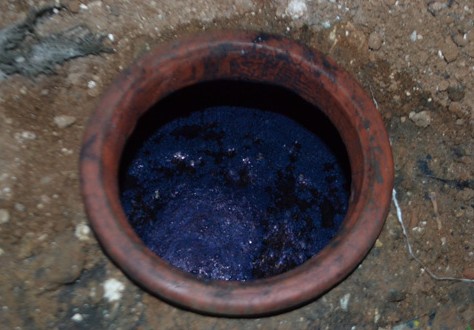 |
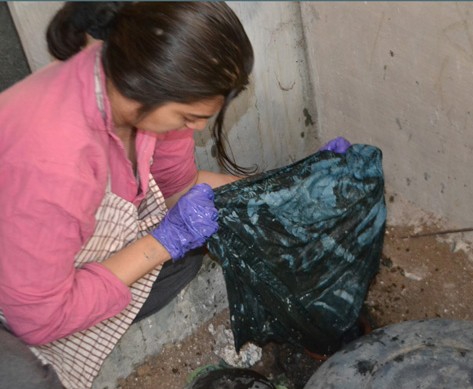 |
|
Photograph Copyright by Taniya Vaidya
|
Photograph Copyright by Taniya Vaidya
|
| Washing the fabric after indigo dyeing | Drying the paintings after washing out the excess dye |
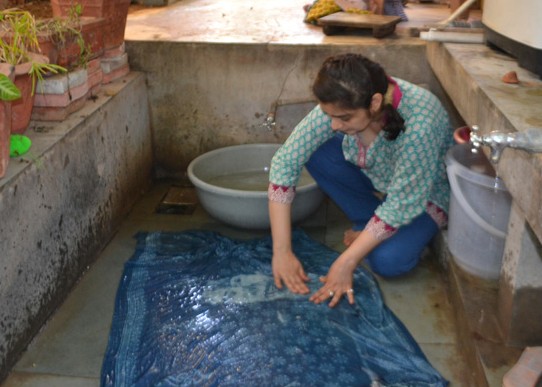 |
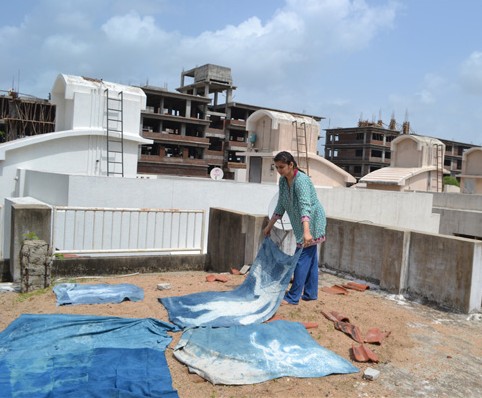 |
|
Photograph Copyright by Taniya Vaidya
|
Photograph Copyright by Taniya Vaidya
|
Ancient Tradition and India's Freedom Struggle
I created these art pieces using indigo, the prized dye after which India is supposedly named, which led to the Europeans seeking out India and ultimately colonizing it. It was the high demand for indigo that led to certain policies of the British that the indigo farmers felt were not sustainable for the land. The movement by indigo workers and farmers under Mahatma Gandhi helped start the freedom struggle that ultimately brought independence for the whole country. While natural indigo has been widely replaced by its synthetic counterparts, the idealist spirit of the Independence movement was the inspiration for my works. The literature and movies of and based on the independence struggle inspired the imagery for my paintings.
Natural dyes on Khadi. 60"x36"
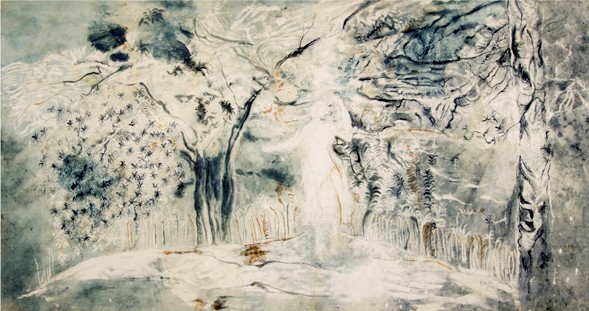
Natural dyes on Khadi. 55"x36"
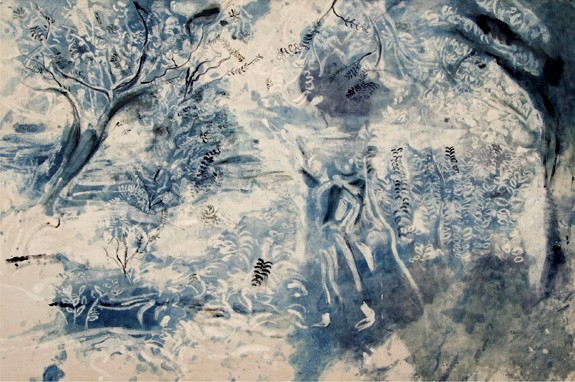
Natural dyes on Khadi. 51"x35"
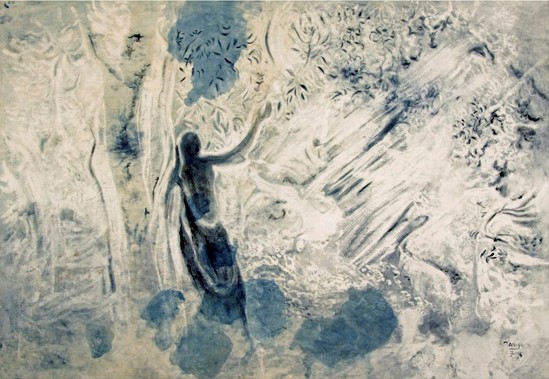
In my other work, I have also used inspiration from scientific/objective views of nature and landscape: maps, microscopic views of plants, body scans juxtaposed to create a body/landscape. These ideas pay homage to the anthropomorphic view of the landscape prevalent in many ancient cultures.
|
"The study of a Tree - 2" (2016) Natural dyes on Khadi. 35"x54" |
"Body/Map - 1" (2016) Natural dyes on Khadi. 27"x34" |
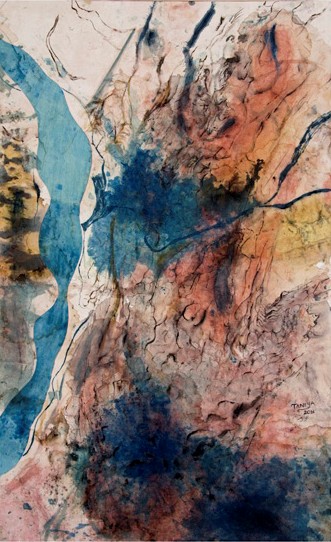 |
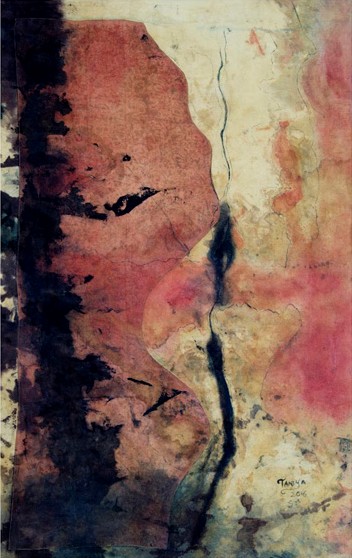 |
|
Photograph Copyright by Taniya Vaidya
|
Photograph Copyright by Taniya Vaidya
|
I believe that my paintings in natural dyes should be popularized, since this can make people aware of environmental concerns. To this end, I also created a public installation cum performance piece (supported by the National Endowment of the Arts) in the central square of Providence, RI, where 12 performers wore costumes dyed using natural dyes from Japan, India and Native Americans in order to infuse a sense of invigoration in the urban landscape and connect the history of the land and botany to urban planning.
 Turkey Red Journal
Turkey Red Journal
